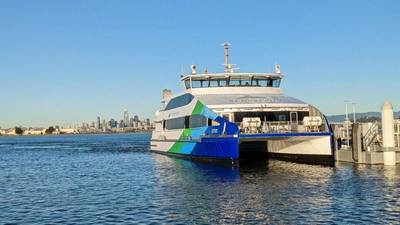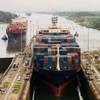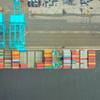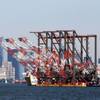WETA's Bay Ferry 2050: Water Transit Reimagined
Spearheaded by the Water Emergency Transportation Authority (WETA), Bay Ferry 2050 is a visionary initiative aimed at transforming the San Francisco Bay Ferry service into an eco-friendly and forward-thinking transportation system. With a focus on fleet electrification, community engagement and the exploration of alternative propulsion technologies, the project sets the stage for a more community-minded, sustainable, operationally strong, fiscally sound and environmentally conscious passenger vessel industry.
Ferries have long been an essential component of the United States' transportation network, connecting communities, easing congestion and providing vital links across bodies of water. As early as the 1930s, 50-60 million passengers a year commuted across the San Francisco Bay by 50 ferries. Ridership plummeted after the Bay Bridge opened to traffic, with only four vessels remaining in service.
In 1989 a tragedy struck the Bay and surrounding areas in the form of the Loma Prieta earthquake. In the aftermath, major roadways, including the Bay Bridge, were damaged, and people suddenly found themselves without a way to reach loved ones, go to work, and return to their normal lives, except for the ferries. From this, it became clear that the ferries were part of the critical transportation infrastructure, enhancing the overall transportation network's capacity and adaptability.
More recently, the San Francisco Bay Ferry has been seeing its highest ridership since before the pandemic, a sign that the community sees the vessels as a reliable, affordable, regional transportation solution. To keep on this path, the San Francisco Bay Ferry needed to find the best way to continue to grow and serve its customers.
The Bay Ferry 2050 project was borne out of a need to turn WETA’s 2016 Strategic Plan into a blueprint for action. WETA developed a robust public outreach program around determining priorities and opportunities for the vision of Bay Area ferry service in the year 2050. To guide expansion and enhancement policies and priorities, funding needs, decarbonization planning and more, WETA is using the six focus areas: expanding and diversifying the regional ferry network, emergency response, environmental stewardship, community connections, organizational capacity and financial capacity.
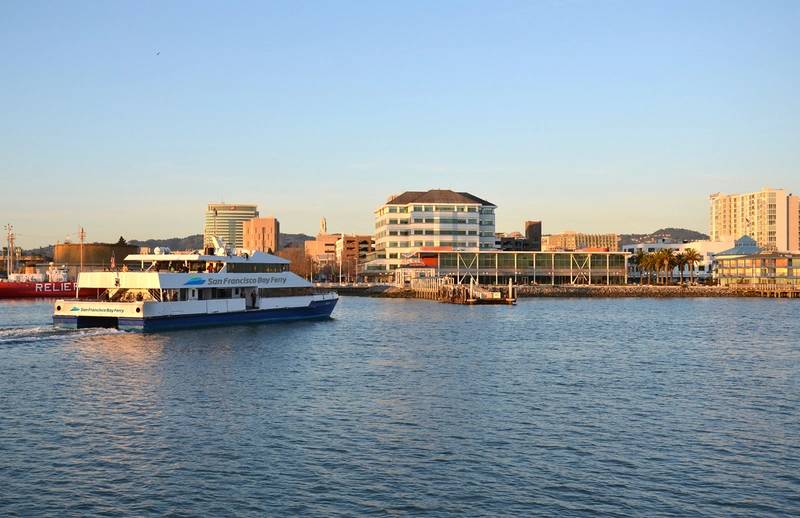 (Photo: WETA)
(Photo: WETA)
Community engagement: A key pillar
Just as corporations understand the importance of engaging stakeholders in sustainability initiatives, WETA recognizes the significance of community involvement. Beginning in 2021, WETA began working with the community to gather their ideas for the future of the ferry services. Stakeholders included not just the passengers utilizing the ferries today, but business, partners, governments and more.
“We serve and are accountable to the public, so public input is crucial to the success of the service vision,” a WETA spokesperson told Marine News.
Taking into account feedback from the community, WETA has identified four key factors for customers when they are deciding to use the ferry:
- Routes that bring in the most riders and routes that expand ferry connections to new parts of the region.
- All-day service options that accommodate non-traditional work and life schedules, while maintaining core service during peak work commute hours.
- Easy, seamless access from ferry terminals to first and last mile transit connections, such as bikes, buses and light rail.
- Smaller vessels or private operators for lower-demand routes.
While environmental impact was not a top deciding factor when choosing the ferry for their transportation, overall, the community cares about the environment as in ensuring that the expansion of the network does not adversely affect wetlands and wildlife refuges.
By incorporating public input, hosting forums, conducting surveys and facilitating interactive workshops, WETA was able to ensure that the Bay Ferry 2050 project would align with the needs and expectations of the community. This collaborative approach fosters a sense of ownership, partnership and shared responsibility, ensuring that the sustainable future of the San Francisco Bay Ferry service is a collective endeavor.
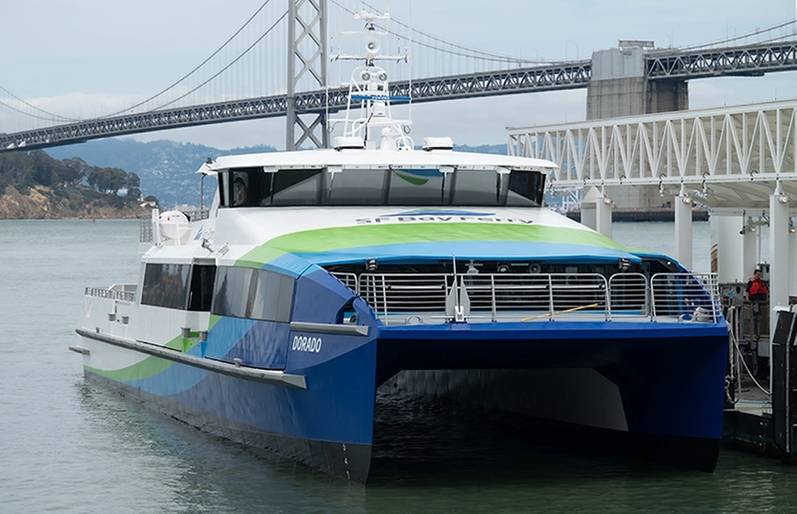 (Photo: WETA)
(Photo: WETA)
Exploring innovative technologies: On board and ashore
At the heart of Bay Ferry 2050 lies the ambitious goal of fleet electrification. By transitioning from traditional fossil fuel-powered vessels to cutting-edge battery electric ferries, WETA aims to significantly reduce greenhouse gas emissions and improve air quality in the San Francisco Bay area. This monumental shift not only aligns with WETA's commitment to environmental stewardship but also sets the stage for healthier communities and a greener future. The comprehensive plan includes repowering existing ferries and developing newbuild battery electric vessels that combine innovative technology with sustainable practices. The first electric ferry is slated to begin construction later this year.
While fleet electrification is a primary focus, WETA remains open to exploring alternative propulsion technologies. By taking a technology-agnostic approach, they have the flexibility to integrate alternative fuels such as hydrogen and fuel cells where appropriate. WETA actively collaborates with operators from around the world, including those in Scandinavia and New Zealand, to exchange knowledge and experiences regarding sustainable propulsion technologies.
“It’s going to take all of us to move the technology and the industry forward, and it’s crucial that we continue to communicate and collaborate where possible,” a WETA spokesperson said.
The implementation of new technologies extends beyond the vessels themselves, encompassing the necessary infrastructure adaptations to support electrification. WETA recently has been awarded grants to electrify multiple ferry terminals, enabling the integration of battery storage systems and expanding the charging infrastructure. Retrofitting ferry floats and enhancing terminal capacity are crucial steps toward achieving a fully integrated and sustainable ferry system. This is a major project that can’t be done alone; it requires deep coordination among many public and private parties and careful planning to ensure the system is successfully and safely integrated.
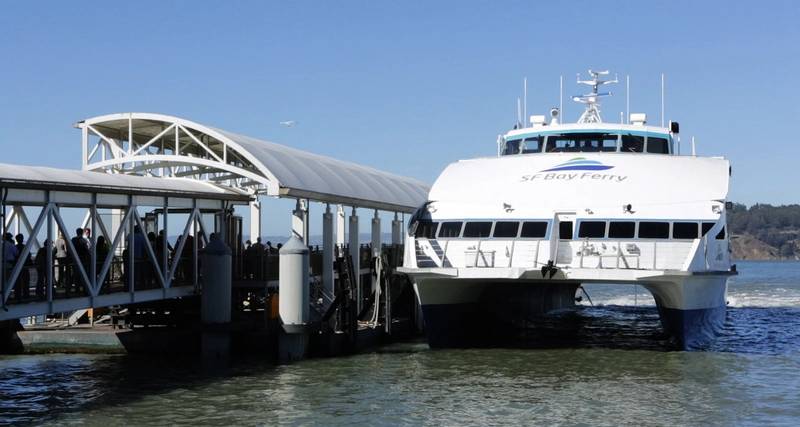 (Photo: WETA)
(Photo: WETA)
Taking action now
While WETA has big plans for the future of the San Francisco Bay Ferry, they are already at the forefront in finding ways to decrease the harmful air pollution emissions for the community.
In 2019, WETA built the first fast ferry featuring U.S. Environmental Protection Agency (EPA) Tier 4 certified engines: Pyxis, built by Dakota Creek Industries in Anacortes, Wash. Following the success of this ferry, the agency launched the Gemini Class Clean Air Conversion Project, a $5.5 million project, to convert four of their Tier 2 legacy vessels to Tier 4. Working with JT Marine in Vancouver, Wash., the project took less than two years to complete.
"The Gemini Ferry project offers residents a clean transportation option to cross the Bay while reducing harmful emissions in communities that are most impacted by air pollution," said Dr. Philip Fine, executive officer of the Air District.
"The Bay Area continues to lead by deploying the cleanest equipment to preserve air quality, protect the climate and safeguard the health of our communities."
Today, 12 of the 16 ferries that make up the fleet are powered by Tier 4 engines.
"Reducing emissions from San Francisco Bay Ferry vessels has always been a top priority for WETA," said Jim Wunderman, Chair of the WETA Board of Directors. "We were the first to adopt the cleanest diesel technology available, and soon we’ll be the first in the nation to operate high-speed, zero-emission electric ferries. We have a responsibility to give the Bay Area a transportation option that improves air quality and public health in the communities we serve and all of this work is connected to that goal."
By incorporating community feedback into their operations and future plans, WETA fosters a sense of ownership and partnership with the public, ensuring that the San Francisco Bay Ferry service truly reflects the values and aspirations of its community.
Through its ambitious vision and collaborative approach, WETA inspires other passenger operators in the marine industry to prioritize sustainability.
By leading the way in reimaging ferry operations, WETA showcases the broader importance of ferries in the United States and sets a precedent for the industry to prioritize environmental stewardship while meeting the growing transportation needs of coastal regions.



